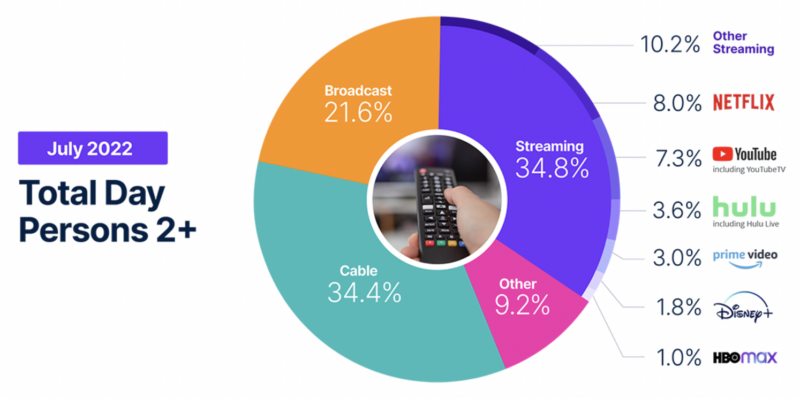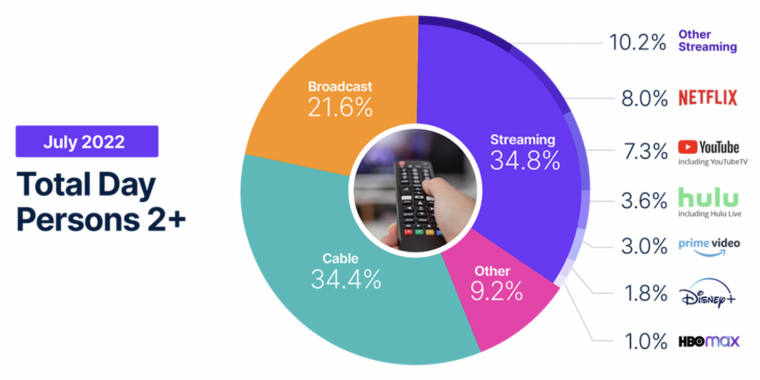
A new report from market measurement firm Nielsen says that for the first time, TV viewers watched more on streaming services like Netflix and Disney+ than they did on cable TV, making streaming the most popular way to consume content.
The shift has been predicted by analysts and commentators for years, but it has only now come to fruition. Streaming had previously outpaced over-the-air broadcast TV, but cable was still beating it until July.
In July, streaming accounted for 34.8 percent of audiences’ TV viewing. The runner-up was the now-dethroned cable TV, which came up narrowly behind at 34.4 percent. The relatively distant third was broadcast at 21.6 percent.
Streaming was up 22.6 percent compared to July of 2021, and audiences streamed an average of 190.9 billion minutes per week. Nielsen points out that this is substantially more than a previously publicized streaming number: 169.9 billion minutes in April of 2020, one of the most locked-down months of the pandemic.
All that said, the shift could be attributed as much to a lack of new content—especially sports programming—on cable in July as to the growth of streaming. Streaming services have been pumping out new content as fast as ever, while cable channels have slowed down for the summer. There is also much more streaming content than there used to be, thanks to new service launches like Peacock and Paramount+ over the past few years.
Nielsen notes that overall TV viewership hasn’t changed much—just the relative size of each slice of the pie. In other words, people aren’t watching more TV; they’re watching the same amount of TV but in different ways.
The report also outlined the relative performance of different popular streaming platforms. The biggest category was the catch-all “other streaming” at 10.2 percent of the streaming pie, but Netflix was the top single service at 8 percent. It was followed by YouTube at 7.3 percent, Hulu at 3.6 percent, Amazon Prime Video at 3 percent, Disney+ at 1.8 percent, and HBO Max at one percent.
Finally, it’s worth mentioning that Nielsen is tracking data from viewing on actual TVs. This data does not include mobile or desktop viewing, which would likely boost streaming even further.








